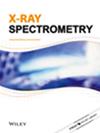基于深度学习的脊椎动物微化石计算机断层图像超分辨率重建
IF 1.5
4区 物理与天体物理
Q3 SPECTROSCOPY
引用次数: 0
摘要
微体化石学家利用微体化石的精细结构来提取进化信息。这些结构不能用肉眼直接观察到。最近,古生物学家求助于计算机断层扫描(CT)图像来挖掘信息,并通过深入研究追求更高分辨率的CT图像。因此,我们提出了一种新的模型,加权超分辨率生成对抗性网络(WSRGAN),用于CT图像的超分辨率重建。与双线性(0.4289)、Bicubic(0.4166)、EDSR(0.2281)、WDSR(0.2640)和SRGAN(0.0815)相比,本文提出的模型(WSRGAN)在实验数据集上获得了更高的LPIPS(0.0757)。我们希望更多基于深度学习的超分辨率重建方法能够应用于古生物学,并取得更好的性能。本文章由计算机程序翻译,如有差异,请以英文原文为准。
Super‐resolution reconstruction of vertebrate microfossil computed tomography images based on deep learning
Micropaleontologists use the fine structures of microfossils to extract evolutionary information. These structures could not be directly observed with the naked eye. Recently, paleontologists resort to computed tomography (CT) images to mine the information, and pursue higher resolution CT images with in‐depth research. Therefore, we propose a new model, weighted super‐resolution generative adversarial network (WSRGAN), for the super‐resolution reconstruction of CT images. The model proposed herein (WSRGAN) obtained higher LPIPS (0.0757) on the experimental dataset, compared with Bilinear (0.4289), Bicubic (0.4166), EDSR (0.2281), WDSR (0.2640), and SRGAN (0.0815). WSRGAN meets the requirements of paleontologists for reconstructing fish microfossils. We hope that more super‐resolution reconstruction methods based on deep learning could be applied to paleontology and achieve better performance.
求助全文
通过发布文献求助,成功后即可免费获取论文全文。
去求助
来源期刊

X-Ray Spectrometry
物理-光谱学
CiteScore
3.10
自引率
8.30%
发文量
38
审稿时长
6-12 weeks
期刊介绍:
X-Ray Spectrometry is devoted to the rapid publication of papers dealing with the theory and application of x-ray spectrometry using electron, x-ray photon, proton, γ and γ-x sources.
Covering advances in techniques, methods and equipment, this established journal provides the ideal platform for the discussion of more sophisticated X-ray analytical methods.
Both wavelength and energy dispersion systems are covered together with a range of data handling methods, from the most simple to very sophisticated software programs. Papers dealing with the application of x-ray spectrometric methods for structural analysis are also featured as well as applications papers covering a wide range of areas such as environmental analysis and monitoring, art and archaelogical studies, mineralogy, forensics, geology, surface science and materials analysis, biomedical and pharmaceutical applications.
 求助内容:
求助内容: 应助结果提醒方式:
应助结果提醒方式:


